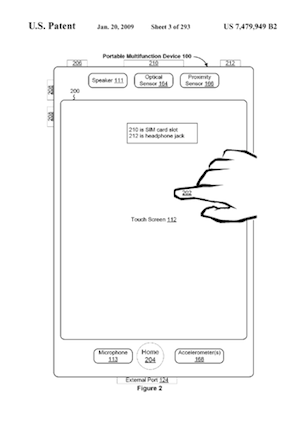Millions In Losses: FBI Investigates Widespread Office365 Executive Email Compromise

Table of Contents
Understanding the Office365 Executive Email Compromise Scheme
How the Attacks Work
Cybercriminals employ various techniques to breach Office365 security and compromise executive email accounts. Common attack vectors include:
- Phishing attacks: These involve deceptive emails designed to trick recipients into revealing sensitive information like passwords or clicking malicious links.
- Spear phishing attacks: More targeted than general phishing, spear phishing campaigns use personalized information to make the email appear legitimate and increase the chances of success. These often exploit current events or internal company information.
- Credential stuffing: Attackers utilize stolen usernames and passwords obtained from other data breaches to attempt to access Office365 accounts. This is often successful against accounts with weak or reused passwords.
- MFA bypass: While multi-factor authentication (MFA) is a critical security measure, sophisticated attackers are finding ways to circumvent it, using techniques like SIM swapping or exploiting vulnerabilities in MFA implementation.
- Social engineering: Manipulative tactics are used to gain the trust of the target. This might involve posing as a trusted colleague, vendor, or superior to convince the executive to take actions that compromise security. This is often combined with other attack vectors for maximum effect.
These methods, combined with effective social engineering, allow attackers to gain access to accounts and wreak havoc. Effective Office365 email security requires a multi-layered approach.
Targeting Executives
Executives are prime targets for several reasons:
- Access to sensitive information: Executives often possess access to critical financial data, strategic plans, and confidential client information.
- Control over financial processes: Their authority allows them to initiate wire transfers and approve significant financial transactions, making them ideal targets for fraudulent schemes.
- Sophisticated social engineering: Attackers tailor their approach to executives, employing highly personalized and convincing emails to bypass suspicion. This often involves researching the executive and their network.
The result of a successful attack can be devastating, leading to significant financial losses from fraudulent wire transfers, contract manipulation, and reputational damage. CEO fraud, a common manifestation of this type of attack, is particularly damaging.
The Impact of Widespread Office365 Executive Email Compromise
Financial Losses
The FBI investigation reveals millions of dollars in losses attributed to this type of attack. The financial impact extends beyond the immediate loss of funds:
- Significant financial losses: Businesses suffer direct financial losses from fraudulent transactions and the costs associated with investigations and remediation.
- Reputational damage: A successful attack can severely damage a company's reputation, leading to loss of investor confidence and customer trust.
- Business disruption: The disruption caused by a data breach can halt operations, impacting productivity and profitability.
- Increased cybersecurity costs: Companies often incur significant costs implementing enhanced security measures and responding to incidents.
Legal and Regulatory Implications
Data breaches resulting from Office365 executive email compromise have severe legal and regulatory ramifications:
- Data breach notifications: Companies are legally obligated to notify affected individuals and regulatory bodies of data breaches under laws like GDPR and CCPA.
- Regulatory fines and penalties: Non-compliance with data protection regulations can result in hefty fines and legal action.
- Legal liabilities: Businesses can face lawsuits from customers, investors, and other stakeholders due to financial losses or reputational damage.
- Insurance claims: Cyber insurance policies might cover some losses, but the process can be complex and may not cover all costs.
Preventing Office365 Executive Email Compromise
Implementing Robust Security Measures
To prevent Office365 executive email compromise, robust security measures are essential:
- Strong password policies: Enforce complex passwords and regular password changes.
- Multi-factor authentication (MFA): Implement MFA for all accounts, particularly executive accounts, to add an extra layer of security.
- Advanced threat protection (ATP): Utilize ATP solutions to detect and block malicious emails and attachments before they reach the inbox.
- Email security solutions: Employ robust email security solutions that filter spam, phishing attempts, and malware.
- Security awareness training: Conduct regular security awareness training for employees, focusing on phishing and social engineering techniques. This is crucial for recognizing and avoiding suspicious emails. Regular phishing simulations are highly effective.
- Regular security assessments: Conduct periodic security assessments and penetration testing to identify vulnerabilities.
Responding to Suspicious Emails
Establish clear procedures for handling suspicious emails:
- Identify suspicious emails: Train employees to identify suspicious emails based on sender address, grammar, urgent requests, and unusual attachments.
- Verify requests: Always verify requests for funds or sensitive information independently, by calling the purported sender directly using a known phone number. Never rely solely on email communication.
- Incident response plan: Develop and regularly test an incident response plan to address security breaches quickly and effectively. This plan should clearly outline who to contact, what steps to take, and how to contain the damage.
Following these steps can significantly reduce the risk of a successful attack.
Conclusion: Protecting Your Business from Office365 Executive Email Compromise
The FBI investigation highlights the devastating financial and reputational consequences of Office365 executive email compromise. The millions of dollars in losses underscore the critical need for proactive security measures. Implementing robust security protocols, such as multi-factor authentication (MFA), advanced threat protection (ATP), and comprehensive employee training, is no longer a luxury—it's a necessity. By diligently following the preventative measures outlined above and staying informed about emerging threats, your organization can significantly reduce its vulnerability to this sophisticated and damaging cyberattack. Don't wait until it's too late—take immediate steps to protect your business from Office365 executive email compromise. Learn more about building a robust cybersecurity strategy today. (Link to relevant resources would go here).

Featured Posts
-
 Will Liam Survive His Collapse On The Bold And The Beautiful
Apr 24, 2025
Will Liam Survive His Collapse On The Bold And The Beautiful
Apr 24, 2025 -
 The Bold And The Beautiful April 16 Hopes Concerns And Bridgets Unexpected Discovery
Apr 24, 2025
The Bold And The Beautiful April 16 Hopes Concerns And Bridgets Unexpected Discovery
Apr 24, 2025 -
 No Firing Trump Comments On Federal Reserve Chairman Powells Position
Apr 24, 2025
No Firing Trump Comments On Federal Reserve Chairman Powells Position
Apr 24, 2025 -
 Sophie Nyweide Dead At 24 Remembering The Child Actor From Mammoth And Noah
Apr 24, 2025
Sophie Nyweide Dead At 24 Remembering The Child Actor From Mammoth And Noah
Apr 24, 2025 -
 Village Roadshow Sold Alcons Stalking Horse Bid Successful
Apr 24, 2025
Village Roadshow Sold Alcons Stalking Horse Bid Successful
Apr 24, 2025
